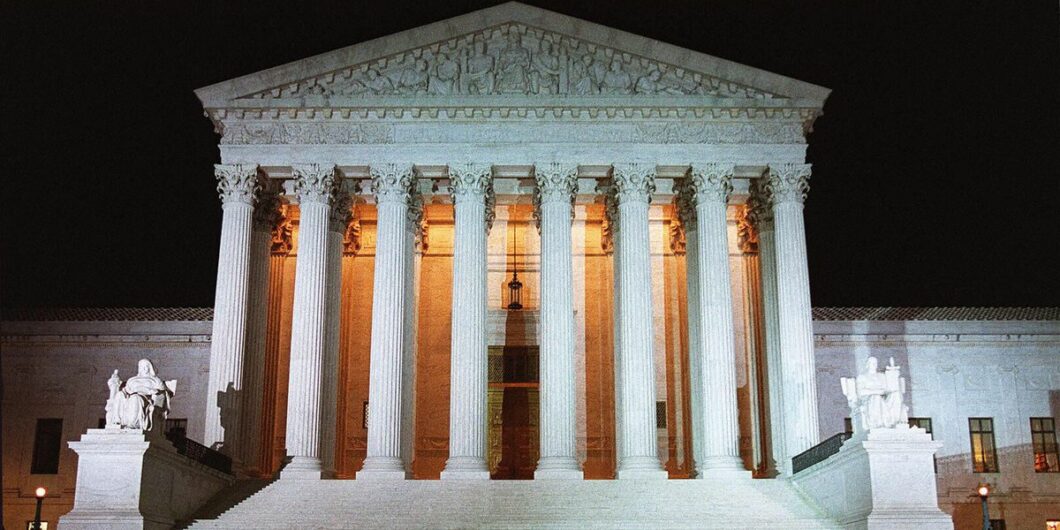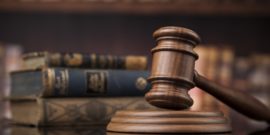Solving the Problem of Nonoriginalist Precedent
Originalism is now the leading jurisprudence on the Supreme Court. But the Court’s many important nonoriginalist precedents create a dilemma. If the Court overrules those precedents, it will in some cases impose enormous costs on those who have relied on the statutes and rights that were believed to be constitutional. But if it leaves them as good law, constitutional law will remain only partially, perhaps only marginally, originalist.
The originalist justices themselves are now debating the appropriate rules for overturning precedent but have not provided any solution to this pressing dilemma. Justice Brett Kavanaugh has proposed a three-part test that would likely entrench much nonoriginalist precedent because it requires special reasons for overruling cases. Justice Clarence Thomas, in contrast, would overrule any precedent that is clearly erroneous under its original meaning. But doing so would overrule some precedents on which much of modern government is built, threatening chaos and upsetting settled expectations. No court is likely to adopt his proposal.
Prospective Overruling
We have recently written an article that advocates “prospective overruling” as a solution to this fundamental problem. Prospective overruling is a practice by which the Court would not apply its ruling retroactively to past statutes and actions but only prospectively to future ones. The advantage of prospective overruling is that it allows the justices to respect past reliance where necessary while nevertheless moving the law decisively to the original meaning.
Precedent rules should protect mistaken precedents when overturning them would impose enormous costs. Prospective overruling would allow the Court to apply a mistaken precedent to the past, thus avoiding the imposition of such costs, but still apply original meaning to the future. This avoids the problem of entrenching mistaken precedent because the Court needs no special reason for overruling it, as Kavanaugh would have it. But it also avoids the chaos of immediate overruling that Justice Thomas’ proposal would cause.
As an example, let’s assume that the original meaning requires a much stricter nondelegation doctrine. Prospective overruling would allow the Court to avoid upending the existing regulatory regime and thereby creating chaos. Agencies could continue to enforce the regulations in place, even if the statutes under which they had been promulgated violated the original meaning. Instead, the original meaning would merely apply to future statutes, giving Congress time to pass tighter regulatory statutes as needed—perhaps under new institutional procedures designed to streamline passage.
The Originalist Objections: Judicial Power
The most significant obstacle to our proposal is the fact that many originalists have never been comfortable with prospective overruling. Justice Antonin Scalia, for instance, was an outspoken opponent. A principal purpose of our article is to persuade originalists that prospective overruling does not flout the Constitution’s original meaning.
Scalia’s argument arose in the aftermath of the Warren Court, which utilized prospective overruling when it overruled precedents, particularly in criminal law, on the basis of living constitutionalism. Scalia thus not surprisingly argued against prospective overruling on the ground that it facilitated judicial activism. But that is policy argument, not an originalist argument. Moreover, prospective overruling today should help the Court return to its original meaning. It will foster fidelity to the Constitution.
Scalia’s most important legal argument is that prospective overruling is beyond the judicial power of Article III because judges must base their rulings on what the law is, not on what it will be. But this stance creates a problem for Scalia, precisely because he is an originalist. After all, the original meaning was the law. What allows him to follow precedent contrary to the original meaning? The justification must be that precedent rules too are the law, and that they permit judges to retain precedent in some circumstances even if it is contrary to the original meaning. Precedent rules were well-established common law rules that English courts, colonial courts, and federal courts in the early republic applied. Scalia appears to accept the constitutional legitimacy of such rules. But if precedent rules are the law, then a judge may follow a precedent rule that permits prospective overruling.
Scalia appears to argue that at the time of the Framing, justices did not engage in prospective overruling. And that, to our knowledge, is true. But there was no reason to expect that there would have been prospective overruling at that time. There were very few precedents, if any, to overrule, both because the Constitution was new and because not just one decision, but only a series of decisions, were required to create precedential force. Moreover, the judges were more likely to have shared the values of those who wrote the Constitution, making nonoriginalist precedents less likely.
Thus, the absence of prospective overruling at the time of the Constitution does not suggest that common law would reject it under the circumstances of today. But even if prospective overruling had been rejected by the common law at the time of the Framing, it would not follow that this common law rule was incorporated into the meaning of judicial power. Virtually no common law rules at the time became part of the judicial power. The hearsay rules, for instance, are not part of the binding content of judicial power. Rather, the common law is able to develop over time as circumstances change.
Our originalist approach to prospective overruling would create a gradual, rule-based mechanism for returning to the original meaning.
The Originalist Objections: Case or Controversy
A second argument against prospective overruling is that a statement that a decision should be overruled prospectively is just dicta because it does not affect the outcome of the current case and even runs afoul of the Constitution’s case and controversy requirement because it is advisory, having no direct effect on the parties to the case. We have a multipart response.
But even before getting to that analysis, it is important to emphasize that what we call “prospective overruling” involves two separate decisions. The first decision concludes that precedent is unsound but should not be applied retrospectively because it would have enormous costs. The second decision is made in a subsequent case and concludes that overturning the precedent at that time would not have enormous costs.
Understanding how the process is broken up helps show that prospective overruling is not, like the Warren Court’s process, a radical change in the law but a step-by-step return to the law, each step of which can be justified. In the first decision, a Court applies a precedent even though it violates the original meaning because overturning the precedent and applying the original meaning to hold existing statutes unconstitutional would create enormous costs. In the second decision, the Court applies the first decision’s judgment as to the original meaning to void a new statute enacted after the first decision had been issued.
In many cases, the statements in the first case about the constitutionality of the practice or statute will not be dicta under any view of the rules for dicta and holding because the original meaning is not clear. For instance, assume there are two possible original nondelegation requirements, both stricter than the current one, but one stricter than the other. Assume further that the strictest version would create enormous costs if it were followed, but the less strict one would not. In such a case, the justices would have to assess the original meaning to decide whether to follow the precedent.
Even in the more general case where the original meaning is clear, the Court’s rule on the original meaning should not be considered dicta or an advisory opinion. The argument that the ruling on the original meaning is dicta or an advisory opinion depends on a narrow definition of holding, treating statements as part of the holding only if they are “necessary to the result.” But that test would treat alternative holdings—two separate arguments either of which justify the result in the case—as dicta, since neither is strictly necessary to the result. Yet courts regularly treat such alternative arguments as holdings.
This strict necessary-to-the-result test would also treat as dicta decisions in which the Court considers issues in logical order. For example, imagine that a police action is challenged as an unreasonable search and that the court first decides that the action was a search but then that it was a reasonable search. In these circumstances, the decision that the action was a search is not strictly necessary to the result, because the Court would have ruled against the defendant whether the action was or was not a search. Yet courts frequently treat both decisions in such a logical order as holdings given that they were vigorously contested by the parties who had no way of knowing whether they would be decisive or not until the court ruled. The better rule would treat as holdings any statement that appears designed to resolve the issue litigated in the case.
Finally, we suggest that even if one disagrees with our analysis and believes the Court’s statements in the first decision about the original meaning were dicta, that view does not mean a subsequent Supreme Court should not take this dicta into account, even if the Court is not bound by it. Following this dicta will still result in lower reliance costs because the new case would only involve a single new statute. And the public is unlikely to have had time to incur significant reliance on that new statute.
Our originalist approach to prospective overruling would create a gradual, rule-based mechanism for returning to the original meaning. It would make it more likely that the Court would restore the original meaning of constitutional provisions, while still recognizing that society comes to rely organically on nonoriginalist precedent. It would also promote the constitutional amendment process. Where nonoriginalist precedents have come to be accepted by the nation, it would give time for social movements to enact those precedents into the Constitution, energizing the people themselves to become once again the creators of our fundamental law.


